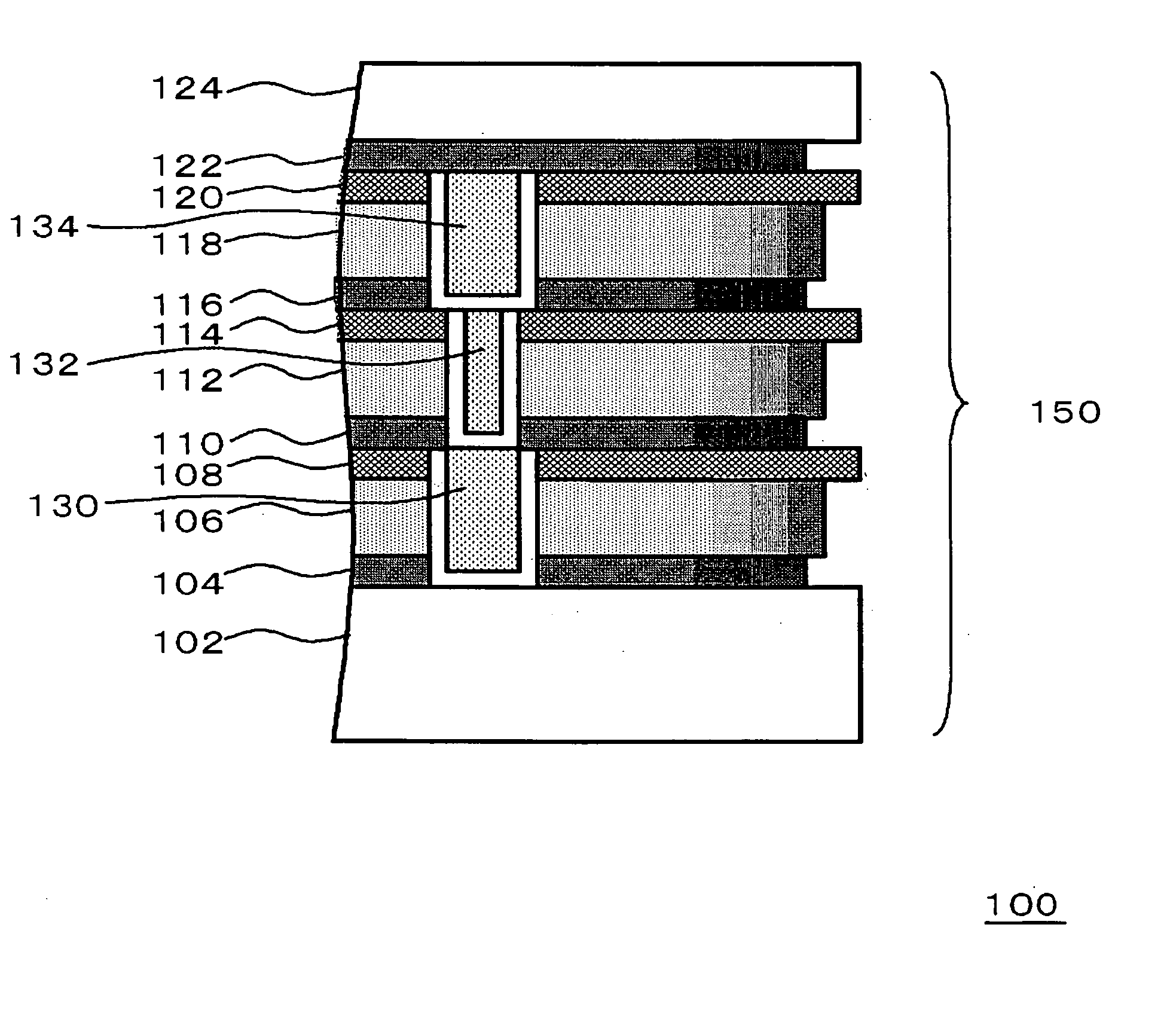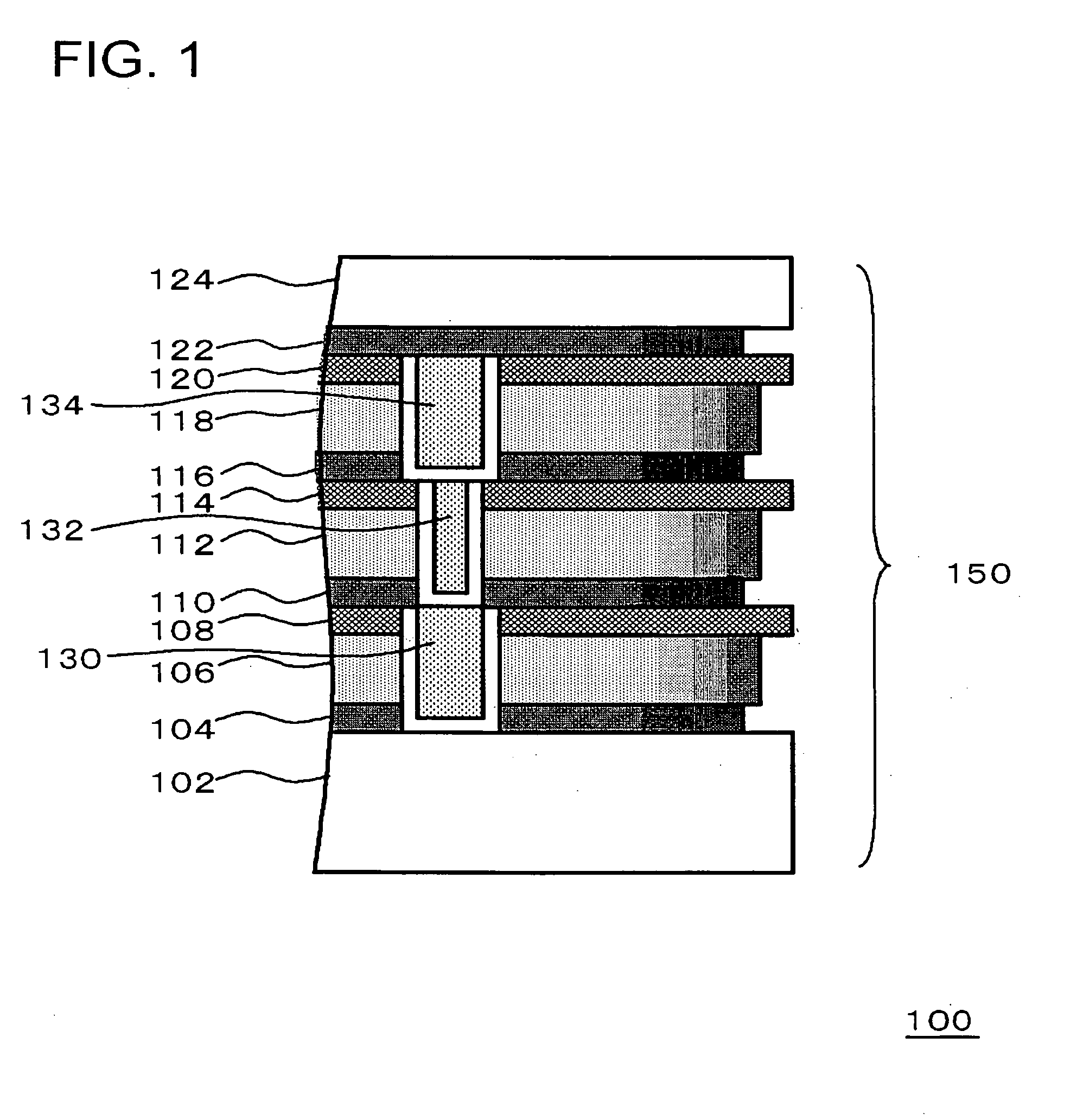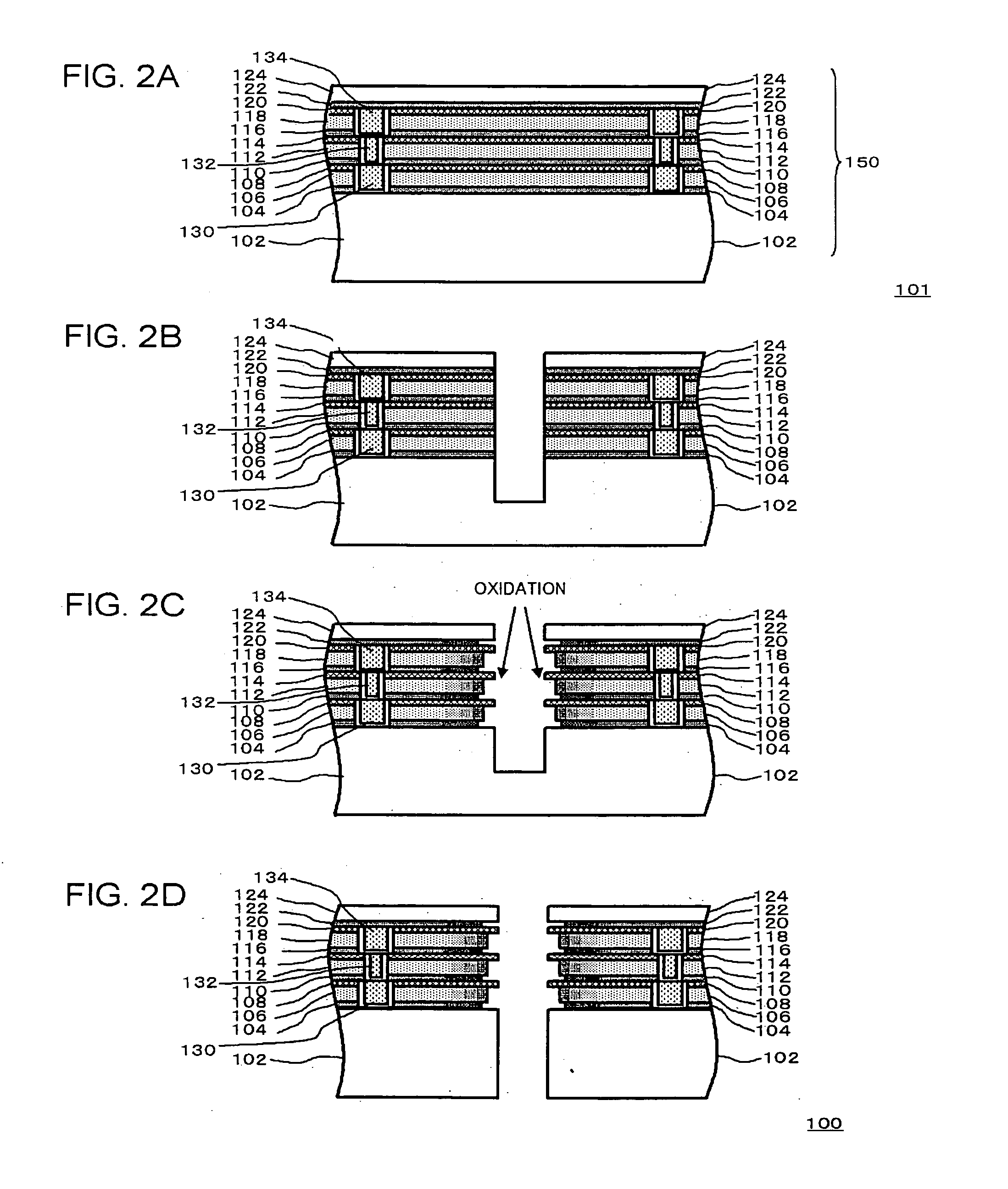Semiconductor chip
a technology of semiconductors and chips, applied in the field of semiconductor chips, can solve the problems of complex process and chipping of wafers, and achieve the effects of improving adhesiveness, simple procedures, and improving adhesiveness
- Summary
- Abstract
- Description
- Claims
- Application Information
AI Technical Summary
Benefits of technology
Problems solved by technology
Method used
Image
Examples
first embodiment
(First Embodiment)
[0046]FIG. 1 is a sectional view showing a part of a configuration of the semiconductor chip of this embodiment.
[0047] The semiconductor chip 100 includes a semiconductor substrate (not shown) and a stacked film formed over the semiconductor substrate, which includes carbon-containing insulating films (a first interlayer insulating film 106, a second interlayer insulating film 112, a third interlayer insulating film 118, a first etching stopper film 104, a second etching stopper film 110, a third etching stopper film 116, and a fourth etching stopper film 122) and carbon-free insulating films (an underlying layer 102 including transistors, a top cover film 124, a first protective insulating film 108, a second protective insulating film 114, and a third protective insulating film 120). The end faces of the carbon-free insulating films herein are located on the outer side of the end faces of the carbon-containing insulating films.
[0048] The carbon-containing insula...
second embodiment
(Second Embodiment)
[0092] Also in this embodiment, the semiconductor chip has a configuration same as that of the semiconductor chip 100 of the first embodiment. This embodiment differs from the first embodiment in procedures of individualizing the semiconductor chips.
[0093]FIGS. 3A to 3C are sectional views showing process steps of fabricating the semiconductor chip 100 of this embodiment.
[0094] Also in this embodiment, the semiconductor device 101 is formed according to procedures similar to those in the first embodiment explained referring to FIG. 2A (FIG. 3A).
[0095] Then, firstly, the semiconductor device 101 is cut from the upper surface of the semiconductor substrate by blade dicing, laser dicing, or a combination of lithographic and etching techniques, along the outer periphery of the chips, to thereby individualize the semiconductor chips 100 (FIG. 3B). The side faces of the stacked film 150 are thus exposed. An oxidative gas is then supplied to the stacked film 150 havin...
third embodiment
(Third Embodiment)
[0097] Also in this embodiment, the semiconductor chip has a configuration same as that of the semiconductor chip 100 of the first embodiment. This embodiment differs from the first embodiment in procedures of individualizing and oxidizing the semiconductor chips.
[0098]FIGS. 4A to 4C are sectional views showing process steps of fabricating the semiconductor chip 100 of this embodiment.
[0099] Also in this embodiment, the semiconductor device 101 is formed according to procedures similar to those in the first embodiment explained referring to FIG. 2A (FIG. 4A). The semiconductor device 101 is then diced from the upper surface of the semiconductor substrate by blade dicing, laser dicing, or a combination of lithographic and etching techniques, along the outer periphery of the chips, and at the same time an oxidative gas is supplied so as to proceed oxidation (FIG. 4B). The side faces of the stacked film 150 of the semiconductor device 101 are thus oxidized. Conditio...
PUM
 Login to View More
Login to View More Abstract
Description
Claims
Application Information
 Login to View More
Login to View More - R&D
- Intellectual Property
- Life Sciences
- Materials
- Tech Scout
- Unparalleled Data Quality
- Higher Quality Content
- 60% Fewer Hallucinations
Browse by: Latest US Patents, China's latest patents, Technical Efficacy Thesaurus, Application Domain, Technology Topic, Popular Technical Reports.
© 2025 PatSnap. All rights reserved.Legal|Privacy policy|Modern Slavery Act Transparency Statement|Sitemap|About US| Contact US: help@patsnap.com



